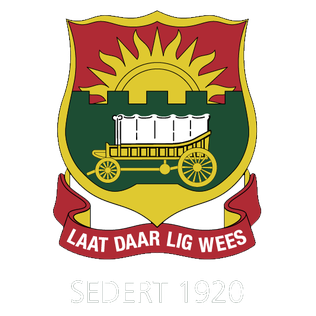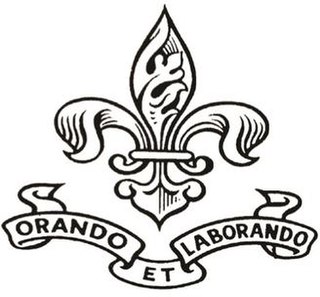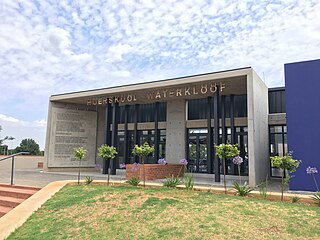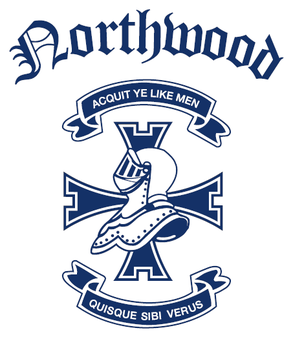
Tonbridge School is a public school in Tonbridge, Kent, England, founded in 1553 by Sir Andrew Judde. It is a member of the Eton Group and has close links with the Worshipful Company of Skinners, one of the oldest London livery companies.

Afrikaanse Hoër Seunskool, is a public Afrikaans medium high school for boys situated in the suburb of Elandspoort in Pretoria in the Gauteng province of South Africa. The school was founded in 1920 by Jan Joubert and reverend Chris Neethling.

Estcourt is a town in the uThukela District of KwaZulu-Natal Province, South Africa. The main economic activity is farming with large bacon and processed food factories situated around the town. The N3 freeway passes close to the town, linking it to the rest of South Africa.

Westville Boys' High School, often referred to as WBHS or "boys high", is a semi-private high school for boys located in Westville, KwaZulu-Natal, South Africa.

Hilton College, more commonly referred to as Hilton, is a South African private boarding school for boys located near the town of Hilton in the KwaZulu-Natal Midlands and is situated on a 1,762 ha estate that includes a 550 ha wildlife reserve and the 150 ha school campus

Pretoria Boys High School is a public, tuition-charging, English-medium high school for boys situated in the suburb of Brooklyn in Pretoria in the Gauteng province of South Africa, founded in 1901 by Alfred Milner, 1st Viscount Milner.
St Charles College, founded in 1875, is a Christian, independent boys college situated in Pietermaritzburg, South Africa, catering for day boys from Grade 000 to Matric, with boarders from Grade 4 upwards.
DiederikJohannes Opperman, commonly referred to as D.J. Opperman was an Afrikaans poet.

Hoërskool Waterkloof is a public Afrikaans medium co-educational high school situated in the eastern suburbs of Pretoria in the Gauteng province of South Africa. It is one of the most expensive Afrikaans medium schools, the fee per child amounting to R 32,400 per annum. It has received the award for academic school of the year from the Gauteng Department of Education (GDE) in 2004, 2008, 2009, 2010, 2011 and 2012. In 2018, it received the award for best academic school in Gauteng province, the ninth time since 2009. It claims a 100% matric pass rate for 30 consecutive years.
Howick High School is a coeducational public school in Howick, KwaZulu-Natal, South Africa, established on 27 June 1967. Whilst it has a weekly boarding facility, known as Midmar House, which can accommodate up to 100 students who live in the local surrounding districts, Howick High School is not a full-time boarding school.
Pinetown Boys' High School is a public school for boys in Pinetown, KwaZulu-Natal, South Africa.
Muir College is a semi-private English medium high school for boys situated in the suburb of Vanes Estate in Kariega in the Eastern Cape province of South Africa. Muir caters for pupils from Grades 4 to 12. It is one of the oldest schools in South Africa (SA) established in 1822.

Northwood School is a high school in the coastal city of Durban, in KwaZulu-Natal, South Africa. Northwood was founded after two schools, Beachwood High and Northlands High combined - forming Northwood School.
Hoërskool Jan van Riebieck is a public co-educational high school situated in Gardens in Cape Town in the Western Cape province of South Africa. It was founded in 1926 by J.J. Jordaan and educates in both Afrikaans and English language.

Voortrekker High School is a public, co-education, dual-medium High School situated in Cordwalles Road, Pietermaritzburg, South Africa.

Ixopo High School is a boarding school in Kwazulu-Natal, South Africa. It was founded in 1895 as the Ixopo Government School in what was originally called Stuartstown. The first black pupil was admitted for the 1989–90 school year after the crumbling Apartheid policies were swept aside by P. W. Botha.

The Bushman's River is an east to north-easterly flowing tributary of the Tugela River, in the KwaZulu-Natal province of South Africa. It rises in the Drakensberg Mountain range, with its upper catchment in the Giant's Castle Game Reserve, north of the Giant's Castle promontory. It feeds the Wagendrift Dam and then flows past the town of Estcourt to join the Tugela River near the town of Weenen.
Dennis Mark Bristow is a South African businessman, the president and CEO at Barrick Gold Corporation. He was previously the founder and CEO at Randgold Resources, which was purchased by Barrick in 2018.

Hoërskool Durbanville is a public Afrikaans medium co-educational high school situated in the town of Durbanville in the Western Cape province of South Africa. It is a public school. It is the oldest High School in the Northern Suburbs of Cape Town, and the only other school older in the Greater Cape Town metropolitan area is Simons Town School in the southern suburbs.
Hoërskool Diamantveld is a public Afrikaans medium co-educational high school in Kimberley in the Northern Cape province of South Africa and the oldest Afrikaans school in Kimberley.












